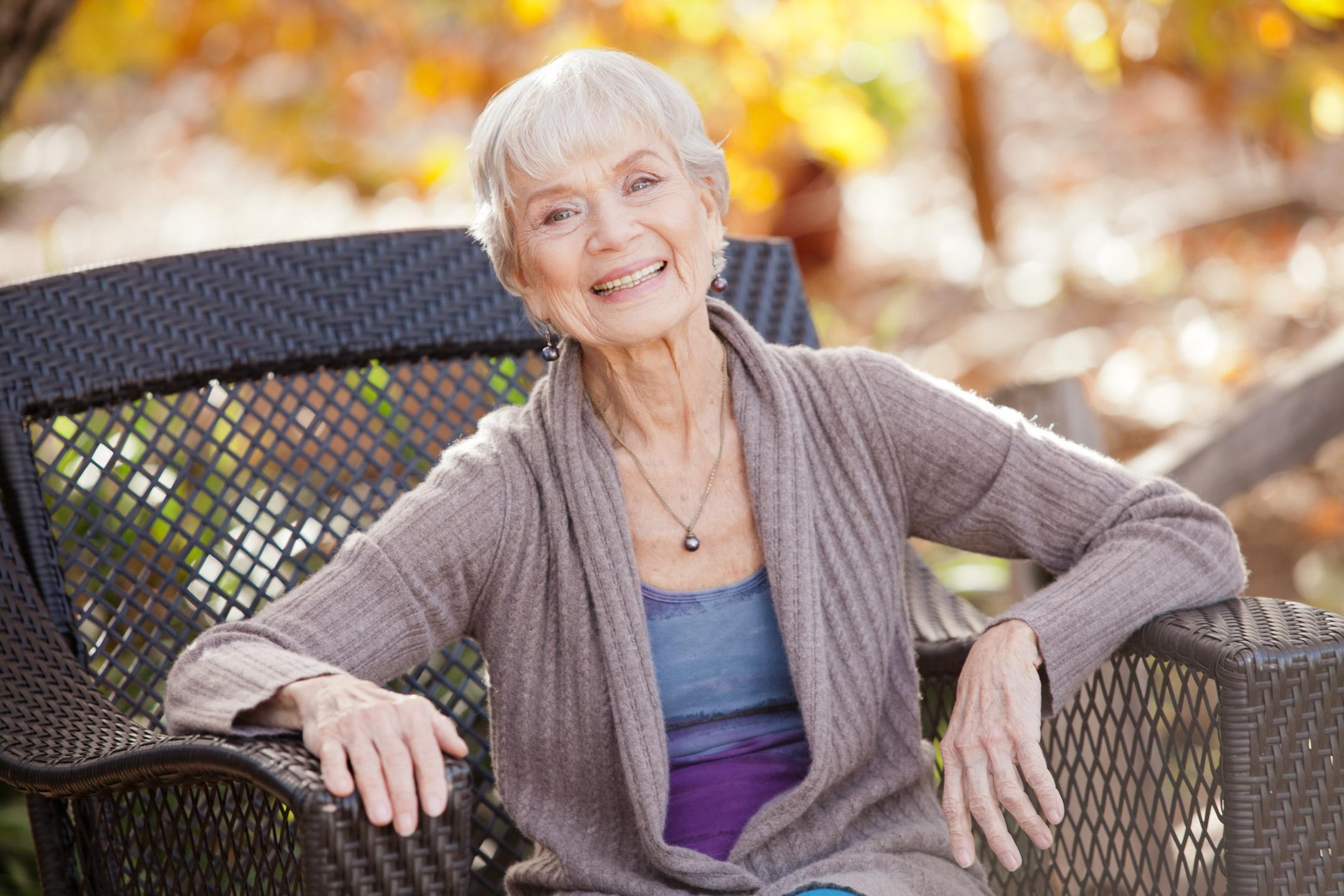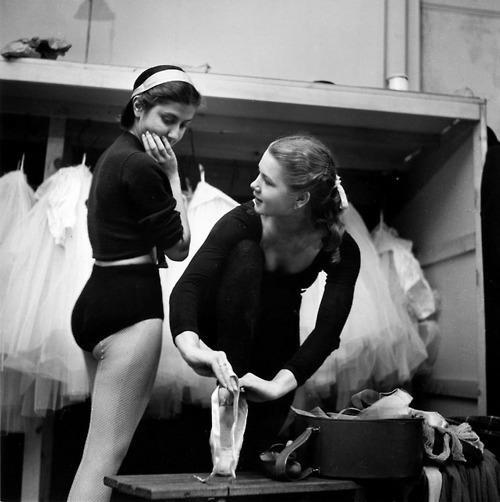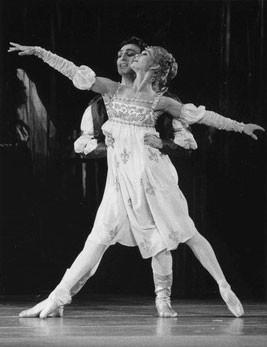Twenty years later, following my professional career as a principal dancer with the National Ballet of Canada, I was taking classes at the Martha Graham School of modern dance in New York City. Though the Graham technique didn’t require the Charlie Chaplin turn-out most of the time the legs were used in parallel position, with the knees facing forward it presented me with a different challenge: the Graham contraction. This was a powerful movement that pulled in the abdomen, thrust the bottom of the pelvis forward and rounded the lower back, creating a hollowed-out look in the front of the body. With a flexible spine, the whole back curved outward. The problem for me here was that I had a swayback, which made it impossible for my lower back to straighten, let alone curve outward.
You can see in the photo below that even with doing exercises to make my spine more flexible, there is still a flat, unbending area in my lower back many years later.

Despite the success I had achieved in my dance life, being told repeatedly to do what I wasn’t able to do was a frustration I lived with daily. One day, though, after a year at the Graham school, I had an epiphany that opened up a whole new world of possibility for me. The instructor teaching the class that day told me I should “feel my muscles,” that that was the way to get your body to work properly.
 If “feeling your muscles” sounds strange, it definitely was strange to me. As a dancer and in my everyday movements, I was certainly using my muscles. But did I feel them? What did that even mean? It was 1964 and, in the heady days of jogging and aerobics, such a thought was puzzling, to say the least. Still, I reasoned that if feeling my muscles meant that I might be able to get my body to do what I wanted it to do, it was worth exploring.
If “feeling your muscles” sounds strange, it definitely was strange to me. As a dancer and in my everyday movements, I was certainly using my muscles. But did I feel them? What did that even mean? It was 1964 and, in the heady days of jogging and aerobics, such a thought was puzzling, to say the least. Still, I reasoned that if feeling my muscles meant that I might be able to get my body to do what I wanted it to do, it was worth exploring.
With that exciting thought, I got on the floor, as we had done in the Graham classes and, using the exercises I’d learned, began noticing where in my body I “felt” anything. The operative phrase that the above instructor frequently used for this sensory experience was “work for sensation.” Though that was equally puzzling at the time, I understood it as I became aware of subtle sensations “percolating” through me, like twitchings and quiverings, heat and vibrations. It became a tantalizing game as, one by one, I “discovered” my muscles, “seeing” where they were by the sensations they produced as I stretched or worked some part of my body.
It was a mind-boggling mind opener! For one thing, I found that the muscles that prevented my knees from turning out more were as tight as violin strings. I also discovered that, despite my years of dance, I had almost no abdominal strength and that I was nowhere near as flexible as I ought to have been. At the same time, I was discovering a dimension of my body I never knew existed – my internal body! It was a fascination and education all in one.
I was learning to “connect” with my muscles consciously and to contract or relax them at will. And with that, I was gradually able to manipulate the parts of my body in an isolated and controlled way. This was the secret I’d been missing all along in my dance years and that finally allowed me to use my body as I wanted to.
It certainly wasn’t a quick fix. However, over the years, this new focus gave me not only a whole new sense of myself, but also, what amounted to a whole new body. My swayback straightened out, my hip joints opened and, with a new flexibility, I was finally able to sit with the soles of my feet together and knees on the floor, or legs crossed in the yoga lotus posture, things I’d never been able to do before. More important than that, it gave me a freedom of movement and bearing that, even now, makes the simple act of walking a sensory and pleasurable experience. Last, and certainly not least, by keeping the cells of my body well nourished, with blood and vital nutrients flowing freely through unrestricted muscle fibres, it has helped keep me healthy.
Though I’m not immune to occasional bouts of discomfort, I’m grateful that I’ve discovered a way to largely rid myself of them when they do occur, and that, at more than 80 years of age, I continue to enjoy full use of my body and am able to help others experience the same exciting sense of self-discovery and method of self-help that has so benefited me. The renewal of energy and the release of muscular tension that come from working deeply into the body are treasures that I value daily. Perhaps the most rewarding part of it all has been the meditative quality and the overwhelming sense of peace that come from learning the art of true relaxation. This is where all the rest starts and what I would most like to pass on to others.






 If “feeling your muscles” sounds strange, it definitely was strange to me. As a dancer and in my everyday movements, I was certainly using my muscles. But did I feel them? What did that even mean? It was 1964 and, in the heady days of jogging and aerobics, such a thought was puzzling, to say the least. Still, I reasoned that if feeling my muscles meant that I might be able to get my body to do what I wanted it to do, it was worth exploring.
If “feeling your muscles” sounds strange, it definitely was strange to me. As a dancer and in my everyday movements, I was certainly using my muscles. But did I feel them? What did that even mean? It was 1964 and, in the heady days of jogging and aerobics, such a thought was puzzling, to say the least. Still, I reasoned that if feeling my muscles meant that I might be able to get my body to do what I wanted it to do, it was worth exploring. After some preliminary teaching in 1977, she established a studio in midtown Toronto in 1980 and gave her method of bodywork training the name of BioSomatics, which she coined from the Greek “bio” and “soma” meaning “life” and “body,” subsequently changing it to Somatic Stretch®.
After some preliminary teaching in 1977, she established a studio in midtown Toronto in 1980 and gave her method of bodywork training the name of BioSomatics, which she coined from the Greek “bio” and “soma” meaning “life” and “body,” subsequently changing it to Somatic Stretch®.
